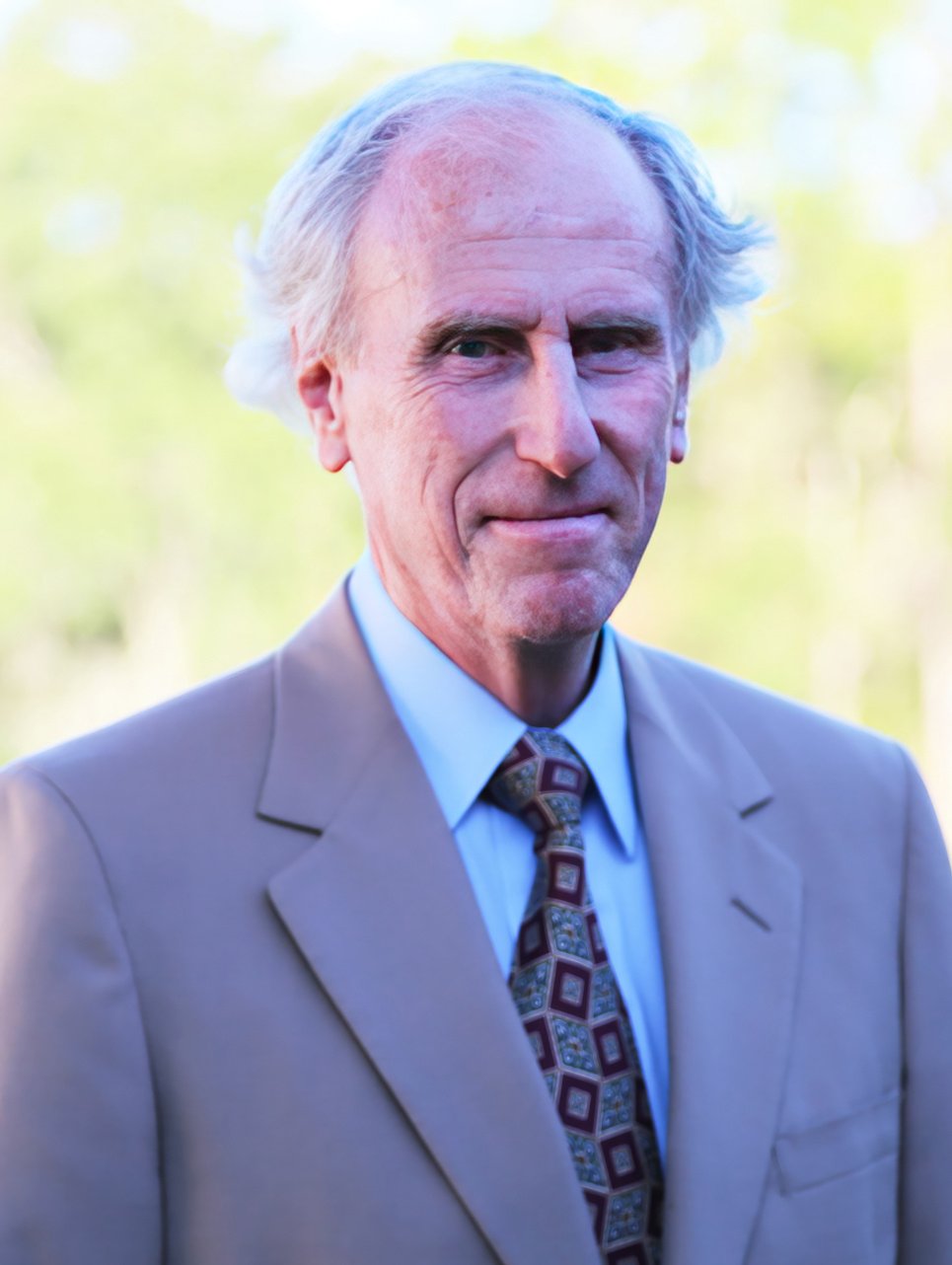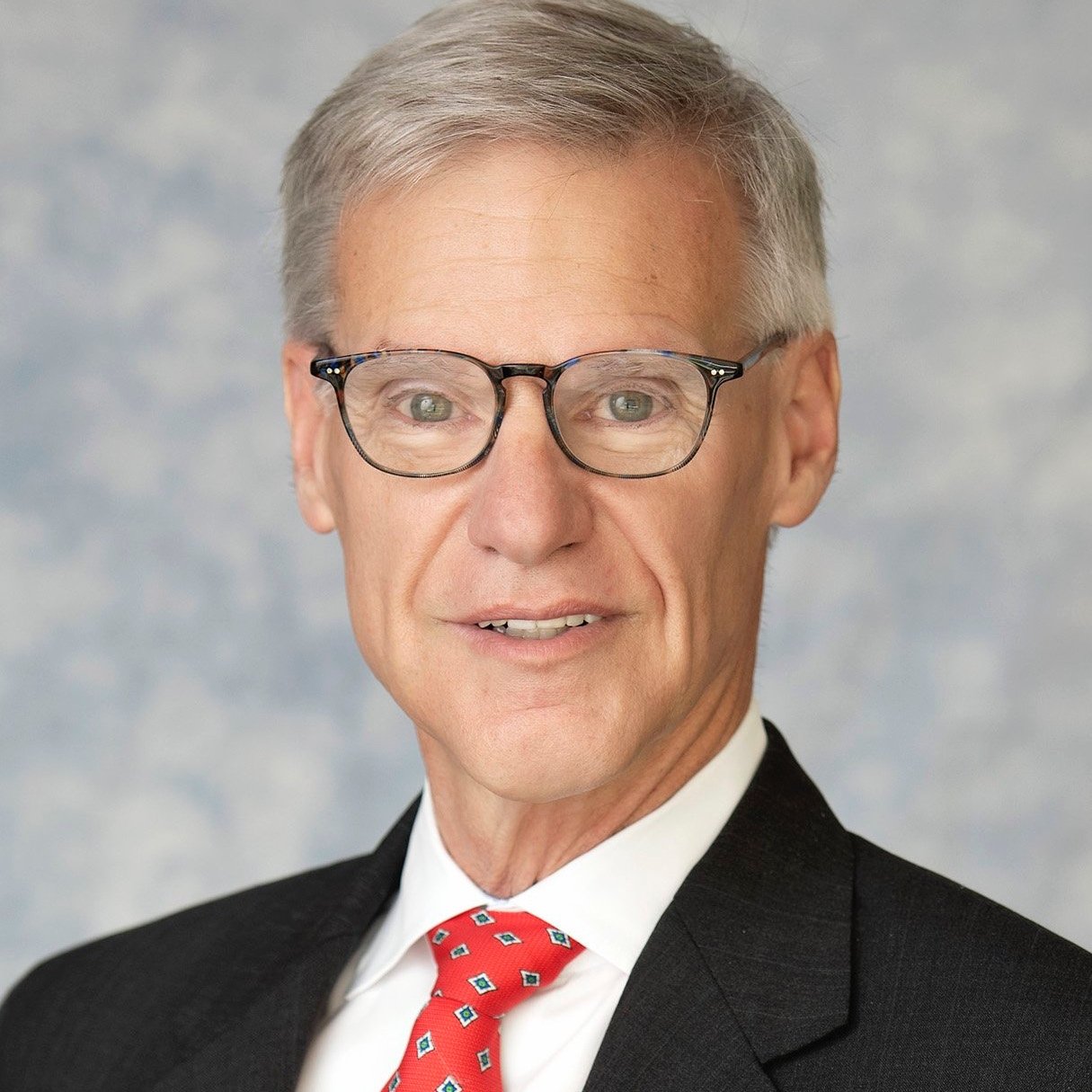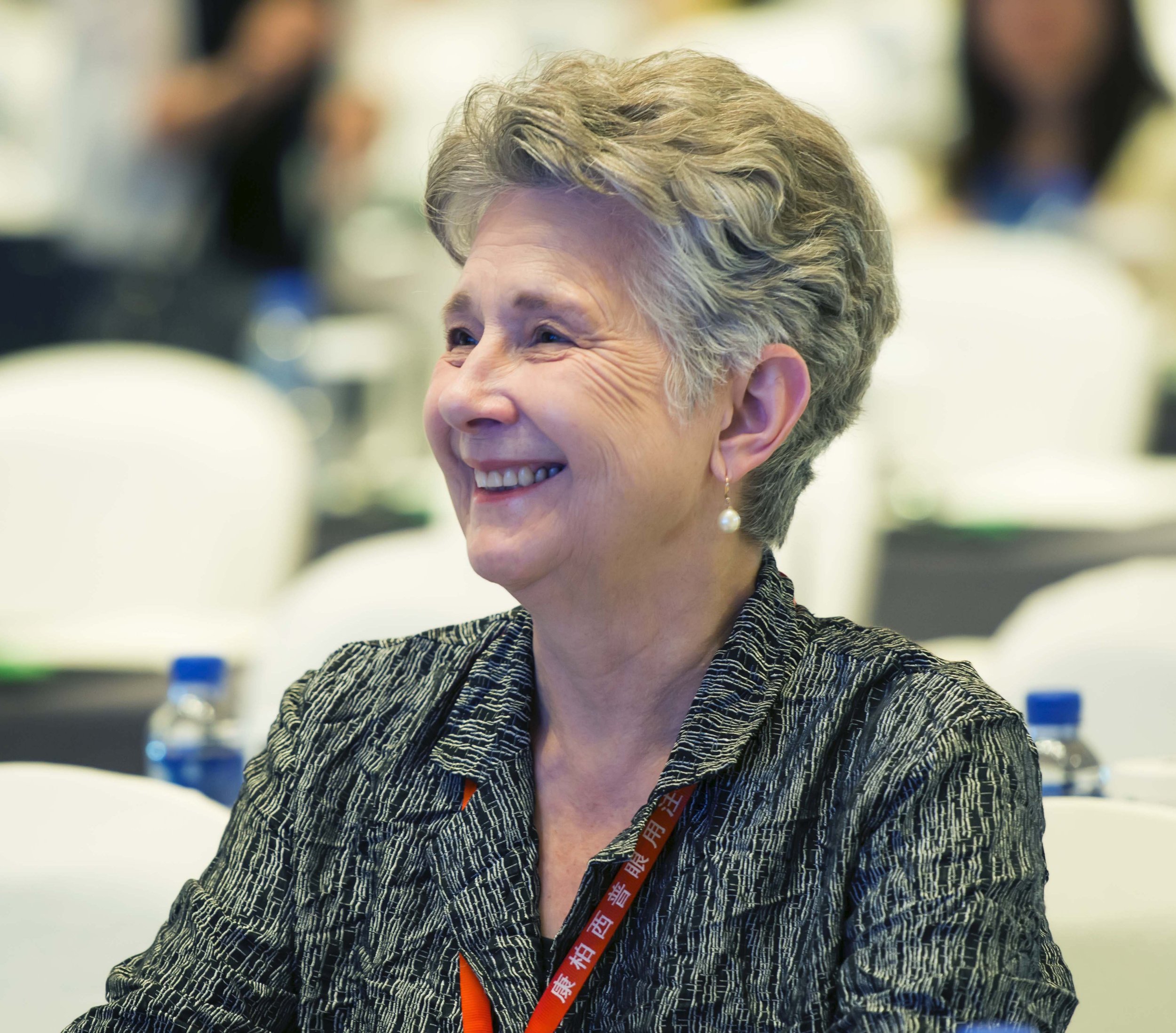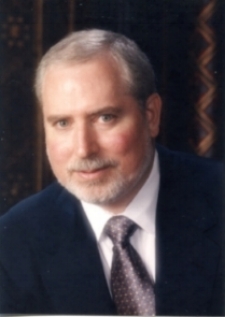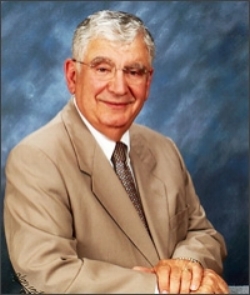Charles Snyder, the long time librarian at the Massachusetts Eye and Ear Infirmary, for whom the Snyder Lecture Series is named. (Photo courtesy of the Massachusetts Eye & Ear Infirmary.)
Snyder Lectures
History
In 1991, David G. Cogan inaugurated the Charles Snyder Lecture to honor Charles Snyder, who for many years was the librarian at the Massachusetts Eye and Ear Infirmary. Snyder's interest in ophthalmic history had led to the publication of a series of essays as the "Our Ophthalmic Heritage" section of the Archives of Ophthalmology while Cogan was its editor. Many of Snyder's essays were collected in book form in 1967 (Snyder C. Our Ophthalmic Heritage. Boston, Mass: Little Brown & Co.). The first Charles Snyder lecture was presented by Frederick Blodi, M.D.
The Charles Snyder Medal was created in 2020, under the leadership of Cogan Society member Jay Galst, M.D.
The 2025 Charles Snyder Lecturer:
Alice "Wendy" True Gasch, M.S., R.D., M.D.
Alice (“Wendy”) True Gasch, MS, RD, MD, is director of the uveitis clinic at Washington National Eye Center (WNEC) at Washington Hospital Center. There, she cares for uveitis patients, and teaches ophthalmology residents. WNEC has a joint ophthalmology residency program with Georgetown University, where Wendy is an assistant professor in the School of Medicine.
She also provides eye care to underserved DC residents at So Others Might Eat (SOME), a community-based nonprofit that offers free health care and other services to the indigent in DC. Further afield, she has provided medical and surgical eye care to the needy in India, Azerbaijan, Mexico, Benin, Sierra Leone, and Honduras.
The road to her present vocation in ophthalmology was circuitous. After growing up in Washington, DC, and graduating cum laude from Middlebury College, she negotiated varied vocational paths: research correspondent for the National Geographic Society, writer and photographer for a tennis magazine and a newspaper, and special assistant for an area agency on aging, where she initiated programs for senior citizens. Then, wanting to help others through work in a health field and intrigued by the burgeoning field of nutrition, she acquired an MS from the Department of Food, Nutrition and Institution Administration at the University of Maryland, where she was elected to memberships in the honor societies Omicron Nu and Phi Kappa Phi. Subsequently, she completed a nutrition traineeship at Kennedy-Kreiger Institute/Johns Hopkins Hospital and became credentialed as a Registered Dietitian. Work as a nutritionist ensued, first at Dairy Council of Greater Metropolitan Washington and then at International Life Sciences Institute. However, she had a longtime fascination with medicine, nurtured through volunteer work in various capacities in several hospitals in DC: Children’s Hospital (now Children’s National Medical Center), Washington Hospital Center, and DC General Hospital. So, when able, she entered a pre-med, post-baccalaureate program at Bryn Mawr College and then earned an MD at Georgetown University. Subsequently, she completed an internship at Medical Center of Delaware, a residency in ophthalmology at Washington Hospital Center, and fellowships in uveitis at the National Eye Institute and in glaucoma at Massachusetts Eye and Ear Infirmary.
She is a Board member of The Prevention of Blindness Society of Metropolitan Washington (POB) and WNEC (currently Board president). She is also a member of the American Medical Writers Association, the Academy of Nutrition and Dietetics, and the American Academy of Ophthalmology.
Her volunteer work has been wide-ranging and has included: initiating and managing a mobile eye services program serving indigent DC residents (possible through collaboration with WNEC and POB), reading for Recording for the Blind and Dyslexic (now Learning Ally), updating education materials and teaching classes for the DC area affiliate of the American Diabetes Association, and peer-reviewing articles submitted to JAMA Ophthalmology. On the basis of her community volunteer work, she was chosen to be a torch-bearer in the 1996 Olympics. For her volunteer service, she also has received the Holton-Arms School Distinguished Alumna Award (2013), the Georgetown University Founders Alumni Award (2022), and multiple awards from POB (2010, 2015, 2023, 2024).
Wendy has written multiple articles published in peer-reviewed nutrition and ophthalmology journals. And she wrote Washington National Cathedral’s Guide to Gargoyles and Other Grotesques of Washington National Cathedral (re-titled in its third printing to Gargoyles & Other Grotesques of Washington National Cathedral). Proceeds from sales go to the Cathedral. That effort was followed by a (tongue-in-cheek) population-based study of the eye abnormalities manifested by the Cathedral’s gargoyles – which was presented to the Cogan Society. She also edited a cookbook to raise funds for the hiking club to which she belongs (the Wanderbirds) when the club maintained a segment of the Appalachian Trail.
Being a hiking enthusiast, she regularly hikes with and leads hikes for the Wanderbirds, which was founded in 1934. Furthermore, she has trod many long-distance trails, and in 2021 she trekked to within six hours of the base camp of K2. However, a blizzard lasting 2 ½ days concealed crevasses and thus thwarted reaching that goal. She has a long-term goal of hiking in all 63 National Parks in the U.S. – and has only 13 to go. Other favorite longtime pastimes include photography (for which she has won awards and had photographs selected for juried exhibition) and tennis (seeded third in the New England Intercollegiates long ago).
Regarding Maya Angelou with high esteem, Wendy champions Angelou’s admonition “…you shouldn’t go through life with a catcher’s mit on both hands; you need…to throw something back.”
2025 Lecture Title
“Gratuitous Eye Color Modification: An Overview”
Purpose: To provide an overview, including the history, of means currently used for eye color modification of normal eyes. This topic is timely because it is trending on social media and because there is indication that modification of eye color of normal eyes is trending upward in the U.S., particularly among individuals with brown eyes.
Methods: Review of material identified via multiple search engines, including PubMed, ResearchGate, and Google Scholar
Results: Modification of eye color has been practiced since at least the second century CE, but until about 15 years ago, it typically was done to abnormal eyes – not normal eyes. Current means used to change the color of normal eyes are: eye drops, iris implants, laser depigmentation of the iris, pigmentation of the cornea (keratopigmentation) and contact lenses. All, except eye drops, are expensive and can change eye color, but all, including eye drops, are associated with potentially sight-threatening complications. Lack of FDA and CE approval is associated with all means, except contact lenses.
Conclusion: Presently, there is no risk-free means of changing eye color. Attempting to do so by any current means can change vision permanently for the worse.
The 2024 Charles Snyder Lecturer:
Curtis E. Margo, M.D., M.P.H.
Curtis E. Margo was born in Hollywood, California and raised in the shadow of the control tower of the LAX. He attended public schools in Los Angeles from kindergarten (Erwing Street Elementary School) through high school (Westchester HS). He majored in biology at the University of Southern California while working two afternoons a week as a tour guide at the Museum of Science and Industry, and on weekends as an emergency room orderly at Daniel Freedman Hospital in Englewood. After graduation from Emory University School of Medicine, he completed a rotating internship at Grady Memorial Hospital in Atlanta, followed by residency in anatomic and clinical pathology at Emory University Hospital. In his free time, he worked evenings as an emergency room physician at Dekalb Medical Center. In the year before starting his residency in ophthalmology at the University of Florida in Gainesville, he served as a junior resident in internal medicine at the University of Virginia in Charlottesville. Dr. Margo concluded his post-graduate training with a two-year fellowship in ophthalmic pathology at the Armed Forces Institute of Pathology in Washington DC.
His first faculty appointment was at Louisiana State University School of Medicine in New Orleans before moving to Florida, where he meandered for four decades working at the University of South Florida College of Medicine in Tampa, the University of Florida in Gainesville, and the Watson Clinic in Lakeland. While at the University of Florida, he was the Dorothy Daniels Professor of Ophthalmic Pathology. In his spare time at the University of South Florida, he studied epidemiology and completed a master’s degree in public health. Dr. Margo currently is director of ophthalmic pathology at USF and teaches at Tulane Medical School, Hospital Corporation of American, and Louisiana State University in Shreveport.
Dr. Margo has been a member of the Cogan Ophthalmic History Society since 2013. He has one grown daughter, Ashley, and is married to Lynn Harman, MD, a frequent collaborator on projects ranging from ophthalmic history and pathology to stained glass murals.
Jonas Friedenwald, Eugene Wolff, and the
Two Books that Helped Bridge the Specialty Gap
Eugene Wolff (1896 – 1954) and Jonas S. Friedenwald (1897 – 1955) were life-long students and educators of anatomic pathology and ophthalmology. Friedenwald in 1929 and Wolff in 1934 each published textbooks of ophthalmic pathology that influenced medical education for decades to come. These works─ The Pathology of the Eye and A Pathology of the Eye─ introduced ophthalmologists in training and in practice to anatomic pathology, while familiarizing pathologists with the nature of ocular disease. Both books appeared at the time when anatomic pathology was departing from its principal academic role in education and research to assume more functional participation in clinical care by establishing diagnoses through biopsy. This presentation provides perspective into the contributions of two men who dedicated their professional careers conveying the relevance of anatomic pathology to clinical ophthalmology. Often overlooked is the role that their textbooks on ophthalmic pathology played towards anchoring ophthalmology to the traditions of medicine.
The 2023 Charles Snyder Lecturer
Christopher F. Blodi, M.D.
Christopher F. (Chris) Blodi was born and raised in Iowa City, Iowa, where he received his undergraduate degrees in Biology and Modern European History from the University of Iowa. He graduated from Washington University in St. Louis School of Medicine and completed his transitional internship in Tucson, Arizona. After finishing his ophthalmology residency at the Bascom Palmer Eye Institute of the University of Miami, he completed a Heed fellowship in diseases and surgery of the retina and vitreous at the University of Iowa.
Dr. Blodi was appointed Assistant Professor at the Bascom Palmer Eye Institute and later Associate Professor at the University of Iowa Department of Ophthalmology. In 1992 he founded Iowa Retina Consultants, Inc. in West Des Moines, the state’s first multi-doctor eye specialty private practice. Dr. Blodi retired from private practice in 2018. He now sees patients at Broadlawns Medical Center, a public hospital in Des Moines, and holds a clinical appointment at the Truhlsen Eye Institute of the University of Nebraska Medical Center in Omaha.
Dr. Blodi is a life member of the American Academy of Ophthalmology from which he received both an Honor Award and a Distinguished Service award. He is a member of the Des Moines Ophthalmology Society, the Iowa Academy of Ophthalmology, the Polk County Medical Society, and the Iowa Medical Society. He is a member of the Retina Society, the Macula Society, and the American Society of Retina Specialists, which named him a charter member of their Retina Hall of Fame.
Dr. Blodi has published over 100 articles, book chapters and reviews. His work has appeared in publications ranging from the New England Journal of Medicine to Sports Illustrated. Dr. Blodi serves as an examiner for the American Board of Ophthalmology and as a reviewer for numerous journals.
Blodi and his wife Patti, who have two grown sons, enjoy hiking (especially in the Colorado Rockies), worldwide travel and visiting their two grandchildren.
_________________________________________________________________
The 2022 Charles Snyder Lecturer:
Pamela C. Sieving, M.A., M.S.
Pam Sieving is a past president of the Cogan Ophthalmic History Society; she has also served on the Cogan Society’s executive committee, and as co-convenor of the 2012 and 2019 meetings. She is not the first librarian to be an active member of the Cogan Society, but is the first to present a Snyder lecture.
Ms. Sieving’s undergraduate education was at Valparaiso University, where she earned a BA in English, with minors in education and German, and was a member of the inaugural class of Christ College, the honors college; she currently serves on the college’s National Council. She also holds an MA in English literature and linguistics from the University of Wisconsin-Madison, and an MS in library and information science from Southern Connecticut State University.
She was employed in the library systems of Yale University, the University of Illinois—Chicago, and the University of Michigan, where she was founding director of the library of the Department of Ophthalmology and Visual Sciences from 1986-2001. She moved to the National Institutes of Health as informationist for the National Eye Institute in 2001, and retired from that position in 2015, but continues as a ‘special volunteer’ at NEI.
Ms. Sieving has had leadership roles in the American Library Association, the Medical Library Association, and the Association of Vision Science Librarians; she is also a member at the ‘distinguished’ level of the Academy of Health Information Professionals, a lifetime member of the Madras Area Library Association (India) and of the Julius Hirschberg Gesellschaft. She regularly consults with vision librarians outside the US, primarily to address issues of access to information and enhancing professional skills. She was a collaborator on a grant from the Elsevier Foundation focused on increasing access in vision libraries in India, Nepal, Egypt, Guatemala and Tanzania, 2012-2014.
Her professional interests include bibliometrics and evidence-based medicine as well as ophthalmic history. She is a member of the Advisory Board of CEV@US, the US-based satellite of Cochrane Eyes and Vision, and has served on the editorial boards of Archives of Ophthalmology (now JAMA Ophthalmology) and the Journal of Visual Impairment and Blindness; she was also the staff librarian for Ophthalmology for eight years.
Pam was born in Shreveport, Louisiana, the daughter of a career United States Air Force officer; the family followed orders sending them around the continental US and Alaska. She is married to Paul Sieving; they have also moved between east and west coasts and around the Midwest, and now reside in Sacramento. Their older son lives in Long Beach; their younger son, his wife and children live in Oakland.
________________________________________________________________
The 2021 Charles Snyder Lecturer:
George Brian Bartley, M.D
G.B. Bartley is the Chief Executive Officer of the American Board of Ophthalmology, the Chief Executive Officer Emeritus of Mayo Clinic in Florida, the Louis and Evelyn Krueger Professor of Ophthalmology at the Mayo Clinic, and the 2020 Laureate of the American Academy of Ophthalmology.
Bartley received a B.A. at Miami University in 1978 and an M.D. at the Ohio State University College of Medicine in 1981. After internship in Columbus, he pursued residency training in ophthalmology at the Mayo Clinic and subspecialty training in ophthalmic plastic and orbital surgery with Dr. John Bullock. Bartley joined the Department of Ophthalmology at Mayo Clinic – Rochester in 1986. He was appointed Department Chair in 1992 and served in that role until 2001, when he was elected to the Mayo Clinic Board of Governors. The following year, he was appointed as Chief Executive Officer of Mayo’s operations in Florida.
During Bartley’s term as C.E.O., Mayo Clinic in Florida built a state-of-the-art hospital (ranked by US News and World Report as #1 in the state), doubled extramural funding for research, significantly exceeded fundraising targets, and achieved the highest patient satisfaction scores of any Mayo site. Additionally, he served as Vice President for Quality for Mayo Clinic nationwide. Non-medical activities included membership on the Florida Council of 100, an advisory body appointed by Governor Jeb Bush of 100 business leaders.
Bartley resumed his surgical practice at Mayo Clinic – Rochester in 2009. The author or coauthor of more than 300 publications, Bartley’s most notable works are his thesis for the American Ophthalmological Society on the epidemiology of Graves’ ophthalmopathy and his thesis for the American Society of Ophthalmic Plastic and Reconstructive Surgery on lacrimal drainage obstruction. In addition to his technical publications, his writings have ranged from baseball to gardening to the blindness of the poet John Milton to the ideas of the philosopher Francis Bacon.
In 2012, Bartley was appointed Editor-in-Chief of Ophthalmology, regarded by many as the premier journal in ophthalmology. During his term, the journal’s impact factor increased from 5.56 to 8.20 and a companion journal, Ophthalmology Retina, was launched. He stepped down from this role in 2017 to become the C.E.O. of the American Board of Ophthalmology. Bartley previously served as the Editor-in-Chief of Ophthalmic Plastic and Reconstructive Surgery and as an editorial board member of Ophthalmology, the American Journal of Ophthalmology, and the Archives of Ophthalmology. Bartley is a Director Emeritus of the American Board of Ophthalmology, past President of the American Ophthalmological Society, past President of the Cogan Ophthalmic History Society, and past Chair of the Doctors Mayo Society. He currently serves on the Foundation Advisory Board of the American Academy of Ophthalmology and the Board of Directors of the American Board of Medical Specialties.
________________________________________________________________
The 2019 Charles Snyder Lecturer:
David G. Harper, M.D.
The Sociology of Refractive Errors: The Good, The Bad, The Mysterious
A native of Ashland, Wisconsin, David received his Bachelor of Science, Master of Science (Anatomy) and Doctor of Medicine degrees from the University of Wisconsin where he also completed a residency in ophthalmology. He then completed a neuro-ophthalmology fellowship under the guidance of Myles M. Behrens, MD at Columbia Presbyterian Hospital and three months of sabbatical time with William F. Hoyt, MD at UCSF.
Enrolling in graduate school during his sophomore year in medical school, David taught gross anatomy to freshman medical students for two years. He also studied with Barry J. Anson, PhD from Northwestern University. Using the large human temporal bone collection at the University of Wisconsin they delineated the embryologic and vascular anatomy of the middle and inner ear and the surgical anatomy of the facial nerve and canal.
David’s clinical career included teaching appointments in the Departments of Ophthalmology at the Bethesda Naval Hospital, the University of California Irvine School of Medicine (where he twice received their “Outstanding Teacher Award”) and at the Salem Veterans Hospital in Salem, VA where he served as Chief of the Ophthalmology Division. A parallel career in the pharmaceutical industry included 5 years as the ophthalmic reviewer at the FDA. His reviews resulted in the marketing of two ophthalmic medications that are still in current use. He has published 23 scientific papers and delivered 43 presentations at various scientific symposia including three in the French language before the French Ophthalmology Society.
David, now retired from clinical practice, collaborates on writing projects with his son, Russell, a professional editor working with the University of Chicago Press.
________________________________________________________________
2018 Charles Snyder Lecturer: Robert M. Feibel, M.D.
Cuban Epidemic Optic Neuropathy (1991-1993) and José Saramago’s novel Blindness (1995)
A native of Cincinnati, Ohio, Bob received his Bachelor of Arts degree from The Johns Hopkins University and Doctor of Medicine degree from Harvard Medical School in 1969. After his internship at the Beth Israel Hospital in Boston, Massachusetts, he and his wife moved to St. Louis, Missouri in 1970 where they have lived since.
Bob completed his residency in ophthalmology at Barnes Hospital and Washington University and has been affiliated with that program since. He is Professor of Clinical Ophthalmology and Visual Sciences and has been an active teacher in the department. He has three times been the recipient of the Ophthalmology Teacher of the Year-Clinical Faculty Award. He has published more than 55 articles and book chapters in the peer review literature, and has served as a peer reviewer for many ophthalmologic journals.
Since retiring from the practice and teaching of ophthalmology, Bob now serves as Director of the Center for History Of Medicine at Washington University School of Medicine, located in the Becker Medical Library. He teaches electives on the history of medicine to first and fourth year medical students, arranges a series of lectures on the history of medicine for both medical and lay audiences, organizes a reading group for physicians and nurses, and arranges special programs in the medical humanities in association with the faculty of the School of Arts and Sciences.
He was recently chosen to be the 2018 Distinguished Alumnus Award Recipient of the Department of Ophthalmology and Visual Sciences; this award will be presented at the annual Spring Update Meeting in April of 2018.
His community and philanthropic activities include an active volunteer association with Opera Theatre of St. Louis, where he has served on the Board of Directors for 37 years and was President of the Opera Guild. He served as a teacher, trustee, officer and president of Temple Emanuel, a reform Jewish congregation. He is a board member of The St. Louis Society for the Blind and Visually Impaired and regularly volunteers at a food pantry.
Bob has been fortunate to have been married to Jane for over 50 years and has had the pleasure of seeing his two daughters and three grandchildren grow up.
Published as: Feibel RM, Arch J. Cuban epidemic optic neuropathy (1991-1993) and José Saramago's novel Blindness (1995). American Journal of Ophthalmology 2018; doi: 10.1016/j.ajo.2018.06.006 PMID 29906432
The 2017 Charles Snyder Lecturer: Ivan Schwab, M.D., F.A.C.S
Does My Dog See in Color? The Evolution of Color Vision
Ivan R. Schwab, M.D. F.A.C.S. is a Professor of Ophthalmology and director of the corneal service at the University of California, Davis. He graduated summa cum laude from West Virginia University (WVU) in 1969 with a bachelor's degree from the Eberly College of Arts and Sciences and received a medical degree from WVU in 1973. Completing his residency at Pacific Medical Center in San Francisco and following three fellowships including a two year stint at the Francis I. Proctor Foundation, Dr. Schwab returned to WVU as a faculty member in the School of Medicine for seven years beginning in 1982. During his tenure there, he served as Chief of Staff for the WVU Medical Center Hospital. In 1989, he moved to the University of California, Davis, and has been on its faculty since then. He has been active with the American Academy of Ophthalmology and received the Lifetime Achievement Award in 2012 among other awards. He is active in several professional societies having served in leadership positions in the Ocular Microbiology and Immunology Group, and the Cornea Society He is an emeritus Board Director on the American Board of Ophthalmology.
He has won the IgNobel in 2006 for Ornithology, numerous teaching awards within his department as well as being cited as a Distinguished Alumnus of West Virginia University. Dr. Schwab has more than 240 articles in peer reviewed journals as well as numerous chapters and four books including his most recent book, Evolution’s Witness: How Eyes Evolved on the evolution of the eye. He has been on the editorial board of EyeNet, the British Journal of Ophthalmology and is currently on the editorial board of the journal CORNEA, the journal Ophthalmology as well as the PanAmerican journal. He has an active practice, and is engaged in research on ocular surface disease, and in comparative optics and physiology.
The 2016 Charles Snyder Lecture
Mark J. Mannis, M.D.
Shakespeare's Eye
Mark J. Manis, M.D., is Professor and Chair of the Department of Ophthalmology & Vision Science, UC Davis Eye Center at the University of California, Davis. He completed his ophthalmology residency training at Washington University in St. Louis and a fellowship in cornea and external disease at the University of Iowa. His primary research includes studies in the development of novel protein-based anti-infective agents, corneal transplantation, visual rehabilitation of patients with corneal disease, management of diseases of the ocular surface, and oculodermal disease. Clinically, he specializes in corneal surgery and diseases of the external eye. Dr. Mannis is editor/author of six recent books on the cornea and ocular surface diseases; he has more than 150 published papers, and was the founding editor of ision Pan-America: the Pan-American Journal of Ophthalmology. Dr. Mannis is a recipient of the R. Townley Paton Award from the Eye Bank Association of America; the Lew Wasserman Award in research from Research to Prevent Blindness, Inc.; the Moacyr Alvaro Gold Medal from the Federal University of Sao Paulo in Brazil; and an honorary doctoral degree from the National University of San Marcos in Peru. He was named the 2014 Castroviejo Medalist by the Cornea Society. Dr. Mannis has spent the last several years in efforts to contribute to vision care in Latin America, for which he was the recent recipient of the Distinguished Scholarly Public Service Award by the Academic Senate of the University of California, Davis.
He has trained fellows since 1990 with over 25 U.S. fellows in cornea and external disease as well as 15 international fellows and almost 100 residents. He conducts a busy referral practice in diseases of the cornea and external eye based at the University of California, Davis.
2015
Jay M. Galst, M.D. (deceased)
Focusing on the Details: Ophthalmologists and Numismatists
(Some of Us Who Are or Were Both)
Jay M. Galst, M.D. delivered the 25th Charles Snyder lecture to the Cogan Ophthalmic History Society at its meeting in New York City on March 28, 2015. Cogan Society member Jay Galst is Clinical Professor of Ophthalmology at the Mount Sinai Icahn School of Medicine, Senior Attending Surgeon at the New York Eye and Ear Infirmary, a past President and Member of the Ocular Heritage Society. He has served as President of the New York Numismatic Club and in 2014 was named a Numismatic Ambassador at the annual ANA convention.
2014
George M. Bohigian, M.D.
Our Ophthalmic Heritage: Superstitions, Symbols and Magic
2013
Danny H.- Kauffmann Jokl, M.D.
Endre A. Balazs, M.D. and David Miller, M.D. and the Serendipitous Origin of Viscosurgery
2012
Gerald Allen Fishman, M.D.
An Historical Perspective for the Early Treatment of Night Blindness and the Use of Dubious and Unproven Treatment Strategies for Patients with Retinitis Pigmentosa
2011
Norman B. Medow, M.D.
Physicians – Poisons – Pupils and a Bella Donna. The Evolution of Forensics
2010
Ira Eliasoph, M.D.
Ophthalmology and Observation: A Life "Apologia pro Vita Ophthalmologica"
2009
William Tasman, M.D. (deceased)
Meyer-Schwickerath
2008
Richard Keeler
Instrument Ancestry: Genesis of the Ophthalmic Examination
2007
Donald Blanchard, M.D.
Ophthalmology of Hieronymus Brunschwig
2006
Gordon K. Klintworth, M. D. (deceased)
Historical Aspects of Yellow the Color Associated with Cowardice
2005
Arthur M. Silverstein, Ph.D.
When the Cure is Worse than the Disease: A Brief History of Ocular Immunopathology
2004
Michael F. Marmor, M. D.
Monet through his Own Eyes
2003
William Spencer, M. D. (deceased)
The Origin and Development of San Francisco Academic Ophthalmology
2002
J. William Rosenthal, M. D.
Early American Spectacle Makers
2001
Sean Murphy, M. D.
A Passion for Books: William Osler, Casey Wood and McGill University
2000
Steven A. Newman, M. D.
Quantitation in Ophthalmology: A Science in Evolution
1999
John Gittinger, M. D.
Radiation and Cataracts: Cause or Cure
1998
Melvin Alper, M. D. (deceased)
Three Pioneers in the Early History of Neuro-Radiology
1997
James Ravin, M. D.
Albert Einstein and his Mentor, Max Talmey
1996
Ronald Fishman, M. D. (deceased)
Gordon Holmes, the Cortical Retina and the Wounds of War
1995
H. Stanley Thompson, M. D.
The Growth of American Neuro-Ophthalmology
1994
Frank Newell, M. D. (deceased)
Origins of the National Eye Institute
1993
Andrew Ferry, M. D. (deceased)
Dr. Isaac Thompson and His Celebrated Eye Water
1992
Daniel Albert, M. D.
The Discovery of the Ophthalmoscope
1991
Frederick Blodi, M. D. (deceased)
Some Famous Persons with Visual Problems
Page last updated February 6, 2025



